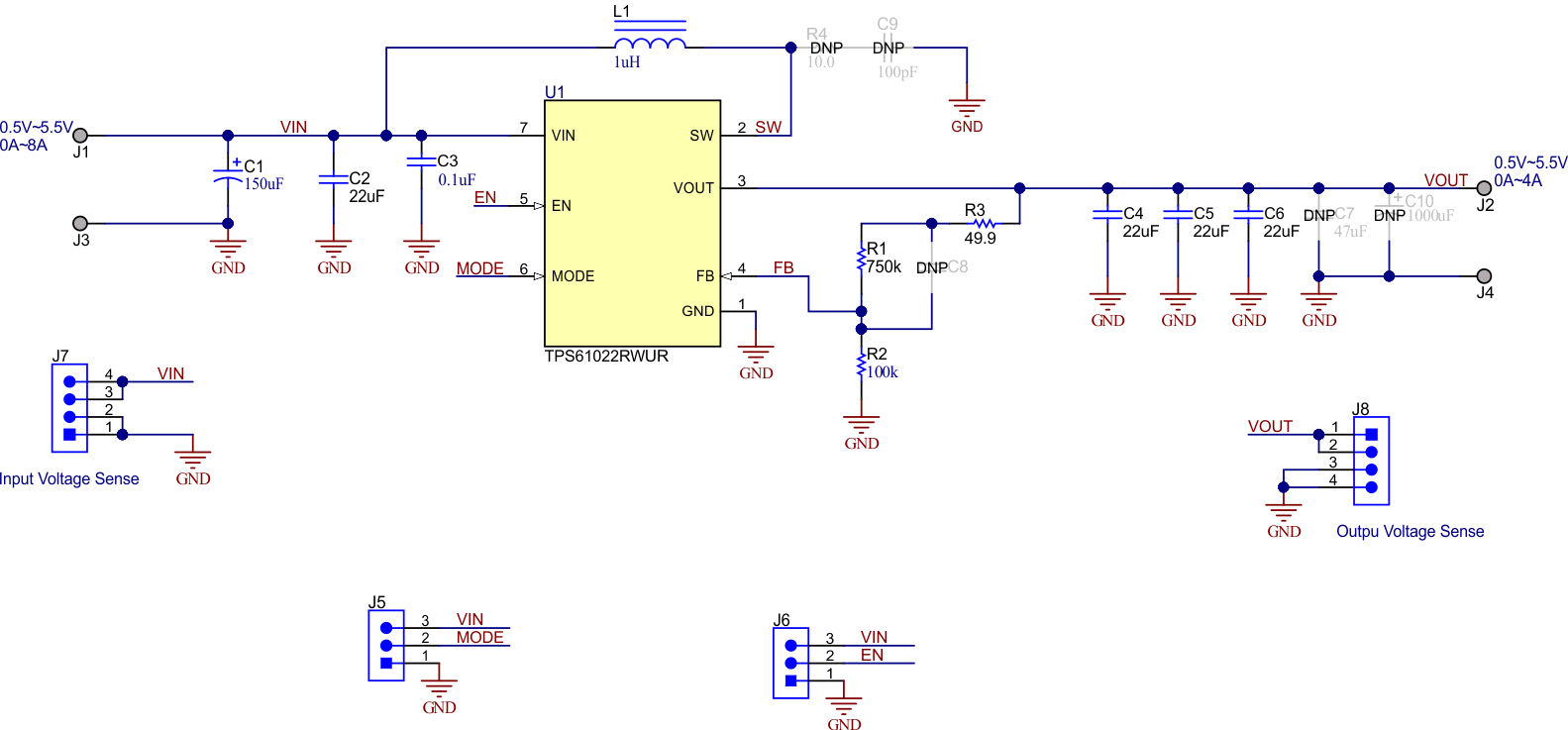SLVAER4 August 2020 – MONTH TPS61022
1 Introduction
Smart meters must continue to operate during brief power outages and send notification messages through a wireless radio, which consumes significant amount energy. As the output voltage of one cell supercap is not higher than 2.7 V, a boost converter is needed to step up the output voltage to power the GSM/GPRS module or MCU. The GSM/GPRS module voltage is normally higher than 3.6 V. The low input voltage boost converter can fully utilize the energy of the supercap and extend the backup power time.
The TPS61022 provides a power-supply solution for portable equipment and IoT devices powered by various batteries and super capacitors. The TPS61022 has minimum 6.5-A valley switch current limit over the full temperature range. With a wide input voltage range of 0.5 V to 5.5 V, the TPS61022 supports supercapacitor backup power applications, which may deeply discharge the supercapacitor.
Figure 1-1 is the schematic in the TPS61022EVM user’s guide designed for a 3.0 V to 4.2 V lithium-ion battery input, 5-V output power supply application. However, for low VIN of 0.5 V to 2.7 V supercap backup power application, an extra feedforward capacitor and big output capacitance is needed to increase the phase margin to make the loop stable.
 Figure 1-1 TPS61022 EVM Schematic
Figure 1-1 TPS61022 EVM SchematicThis application report introduces how to select the TPS61022 external components for supercap backup power applications. Detailed calculation methods and bench test results are presented to verify the proposed circuit.